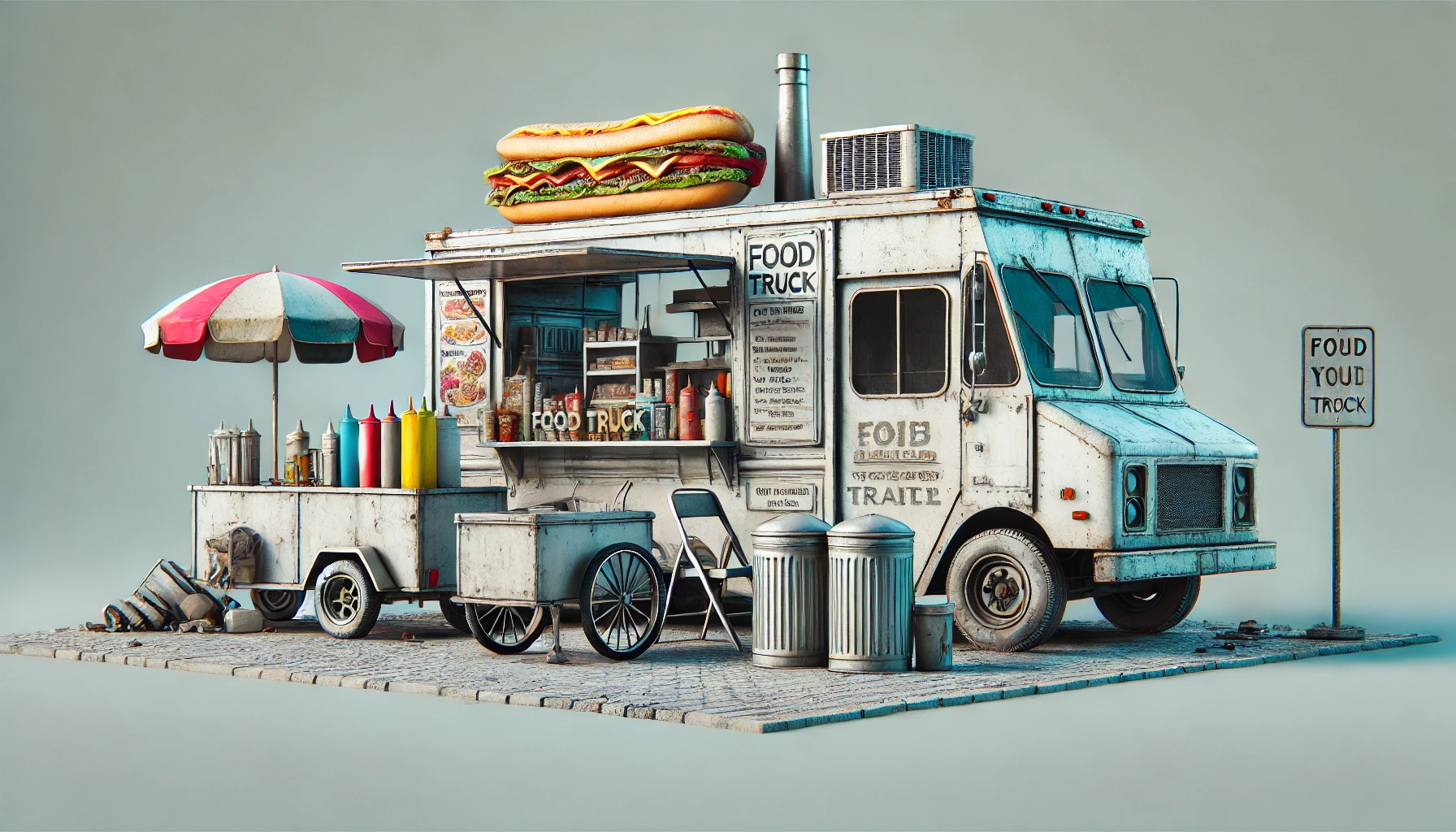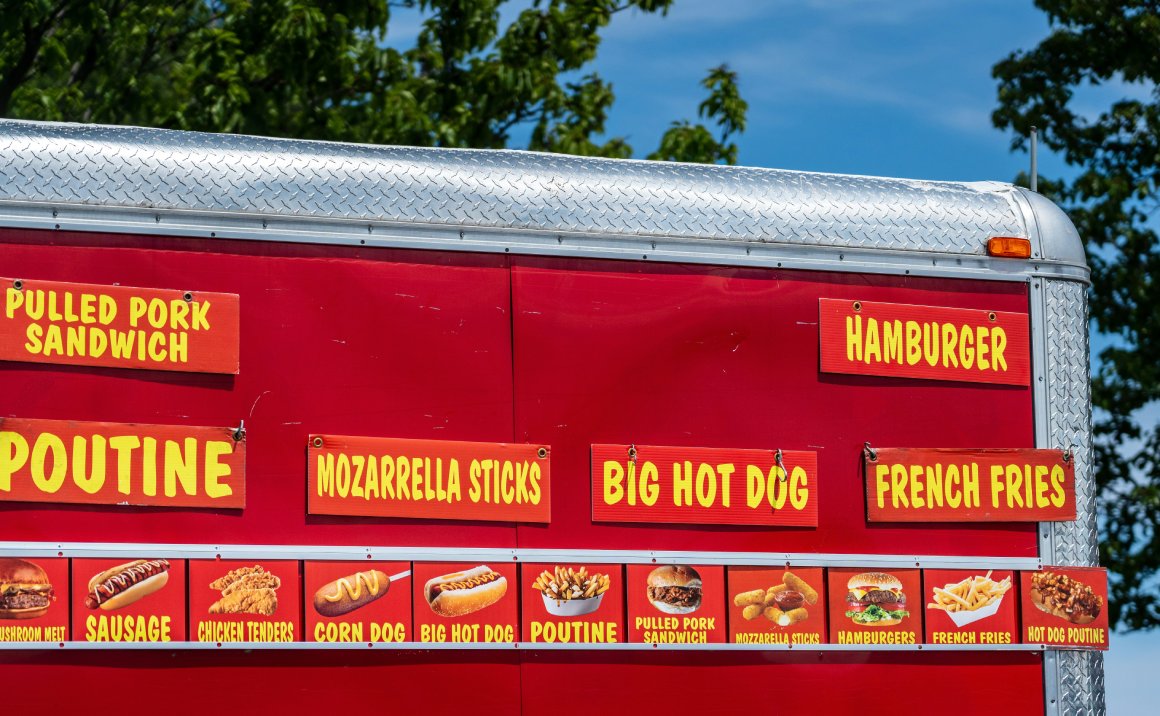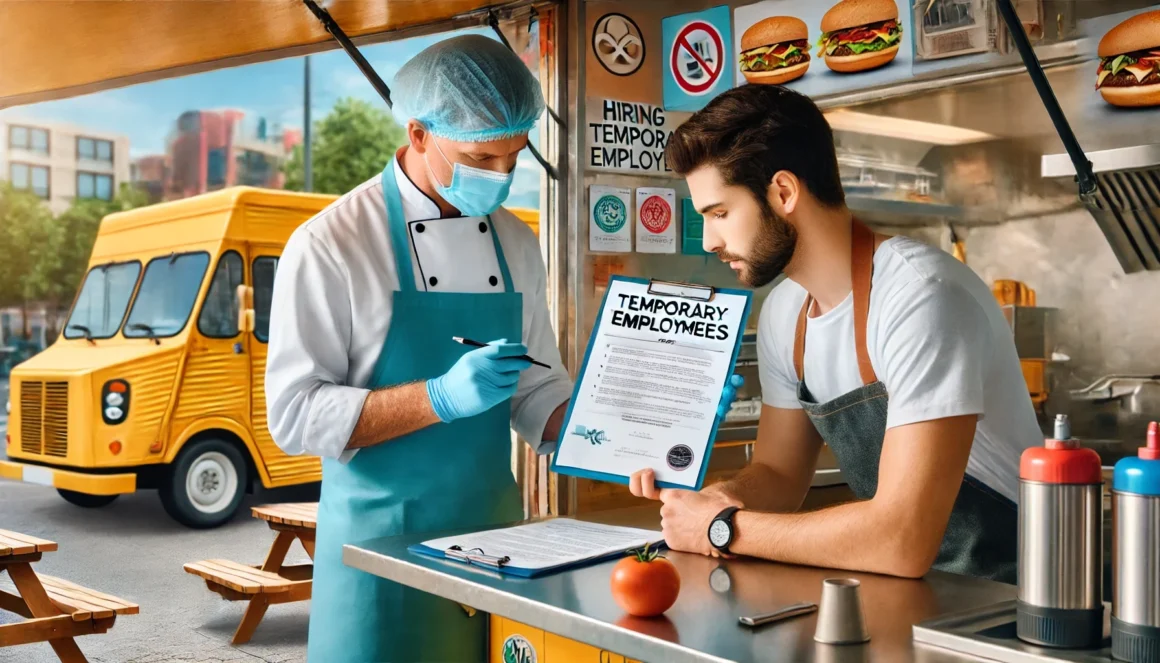
How to Avoid Common Pitfalls When Buying a Food Truck, Trailer, Cart, or Booth Setup
This post is part of a regular series. Click here to start at the beginning.
If you’re planning to enter the mobile food business, whether through a food truck, concession trailer, food cart, or booth setup, making the right investment is crucial. Each of these options has its own unique benefits, but they also come with risks—especially when it comes to buying new versus used equipment, or cheaper setups that may come with hidden problems.
In this post, we’ll summarize the risks and key considerations for each type of mobile food business, helping you avoid common pitfalls and protect your investment.
1. Food Trucks: Balancing Mobility with Maintenance Risks
Food trucks are highly mobile, allowing you to travel to various locations, events, and markets, but they also require careful attention to both the truck’s engine and its kitchen equipment.
Key Risks:
- Mechanical Issues: Since food trucks function as both vehicles and kitchens, engine and mechanical issues can halt your operations entirely. Worn engines, high mileage, or poor maintenance records are red flags, especially for used trucks.
- Faulty Kitchen Equipment: A breakdown in essential appliances—like refrigerators or grills—can spoil food and disrupt service. If buying used, ensure that the kitchen is equipped with durable, working equipment.
Mitigation Tips:
- Always have the truck and engine inspected by a mechanic before purchasing.
- Inspect all kitchen equipment and wiring to ensure they are safe and in working order.
Investment Level: $$$
Used Trucks Cost: $30,000–$70,000
New Trucks Cost: $80,000–$150,000+
2. Concession Trailers: More Space, But Watch the Structure
Concession trailers offer more space for cooking and storage, making them ideal for larger-scale operations or semi-permanent locations. However, they come with their own unique risks, particularly around towing and structural integrity.
Key Risks:
- Structural Weaknesses: Rust, cracked frames, or poorly maintained structures can compromise the safety and longevity of a trailer, especially if it’s been used for years.
- Towing and Weight Distribution Issues: Overloading the trailer or using an inadequate tow vehicle can lead to accidents or mechanical failures.
Mitigation Tips:
- Inspect the trailer’s frame, undercarriage, and tires for rust or damage.
- Ensure your tow vehicle has the capacity to safely pull the trailer when fully loaded with equipment and supplies.
Investment Level: $$–$$$
Used Trailers Cost: $15,000–$50,000
New Trailers Cost: $30,000–$100,000
3. Food Carts: Affordable, But Check for Mobility and Durability
Food carts offer a low-cost entry point to the mobile food business, ideal for urban areas or simple, grab-and-go foods. While more affordable, they come with risks related to mobility and durability.
Key Risks:
- Worn-Out Wheels or Axles: A food cart’s mobility is key to its success. Worn or damaged wheels, axles, or frames can limit where and how you operate.
- Inadequate Equipment: Low-cost food carts may come with substandard equipment, leading to frequent breakdowns or inconsistent food quality.
Mitigation Tips:
- Inspect the wheels, axles, and overall mobility of the cart. Test the equipment to ensure it meets your operational needs.
- Invest in durable, weather-resistant materials to protect against outdoor conditions.
Investment Level: $
Used Carts Cost: $1,000–$10,000
New Carts Cost: $5,000–$20,000
4. Booth Setups: Low-Cost but Highly Dependent on External Factors
Booth setups are the most affordable option, but they are highly dependent on event infrastructure and can present challenges with equipment and setup.
Key Risks:
- Weak or Unstable Tents: Poorly built tents or canopies can collapse in bad weather or become unstable, posing a risk to customers and staff.
- Limited Power and Water Sources: Booth setups often rely on external sources for power, water, and waste disposal. If these resources aren’t available or your equipment is inadequate, it can disrupt your service.
Mitigation Tips:
- Invest in durable, weather-resistant canopies and tents. Ensure they can withstand wind and rain.
- Bring portable generators and water tanks to ensure self-sufficiency at events.
Investment Level: $
Used Booth Setups Cost: $500–$5,000
New Booth Setups Cost: $2,000–$10,000
5. The Risks of Buying New vs. Used Equipment Across All Business Types
When deciding whether to purchase new or used, there are risks and rewards for both options. New equipment offers peace of mind with warranties, but it can be expensive. Used equipment may save on upfront costs, but without proper inspection, it can come with hidden issues that result in higher long-term costs.
Buying New:
- Pros: Warranties, customization options, and fewer surprises. You can design the setup to fit your exact needs.
- Cons: Higher initial costs, often requiring a significant investment that can strain startup budgets.
Buying Used:
- Pros: Lower initial costs, with the potential to save thousands of dollars if you find a well-maintained setup.
- Cons: Hidden issues like rust, faulty equipment, or poorly maintained vehicles may not be apparent until after purchase.
Mitigation Tips Across All Setups:
- Inspections: Whether buying new or used, always inspect the vehicle, trailer, or cart thoroughly. Bring in a mechanic or an expert if necessary to check for potential issues.
- Test the Equipment: For food trucks, trailers, carts, or booths, test all cooking appliances, power sources, and mobility features before purchase.
- Budget for Repairs: Even new setups can require maintenance, so allocate 5-10% of your revenue for ongoing repairs and equipment upkeep.
Conclusion: Protecting Your Investment in the Mobile Food Business
No matter which type of mobile food business you choose—whether it’s a food truck, concession trailer, food cart, or booth setup—it’s important to go into the purchase with a clear understanding of the risks involved. By thoroughly inspecting the equipment, vehicle, or structure, and by budgeting for repairs and maintenance, you can avoid common pitfalls and protect your investment for the long term.
Each business type has its unique pros and cons, so weigh your decision based on your budget, menu, mobility needs, and operational goals. Remember, making the right investment from the start is key to running a successful mobile food business.
This post is part of a regular series. Please use these links to view the rest of the series in order.
Exploring the Different Types of Mobile Food Businesses: Food Trucks, Trailers, Carts, and Booth Setups
The Pros, Cons, and Investment Levels of Food Trucks, Concession Trailers, Food Carts, and Booth…
An Introduction to Starting a Food Truck Business
The Ultimate Beginner’s Guide to Starting a Food Truck Starting a food truck is an…
What Temporary Employees Need to Work on a Food Truck
Temporary Employees for Your Food Truck: Certifications, Training, and Legal Requirements Hiring temporary staff for…



